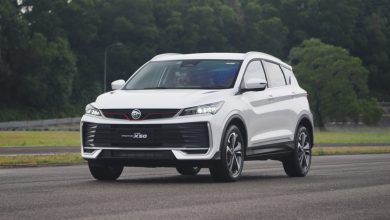Volvo Cars Safety Centre Crash Lab Turns 20 This Year
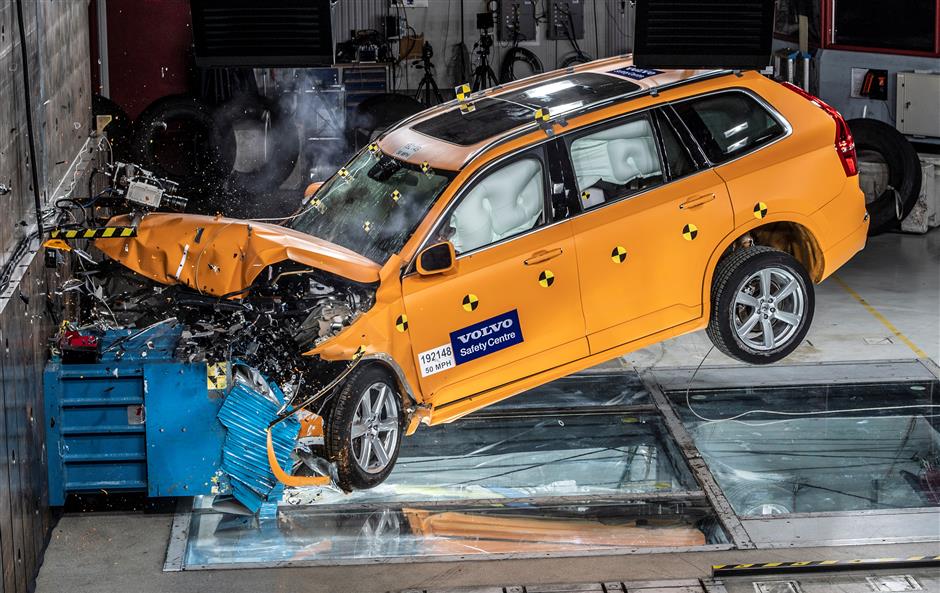
The Volvo Cars Safety Centre celebrates two decades in the service of saving lives.
Volvo has recently celebrated the two decades of service from its Volvo Cars Safety Centre crash lab.
While automakers don’t normally make it a habit of celebrating the anniversaries of its buildings, considering that the main reputation of Volvo is being the pioneer and leader of automotive safety, the place where this reputation is continuously built upon should therefore be more than worthy of a little appreciation.
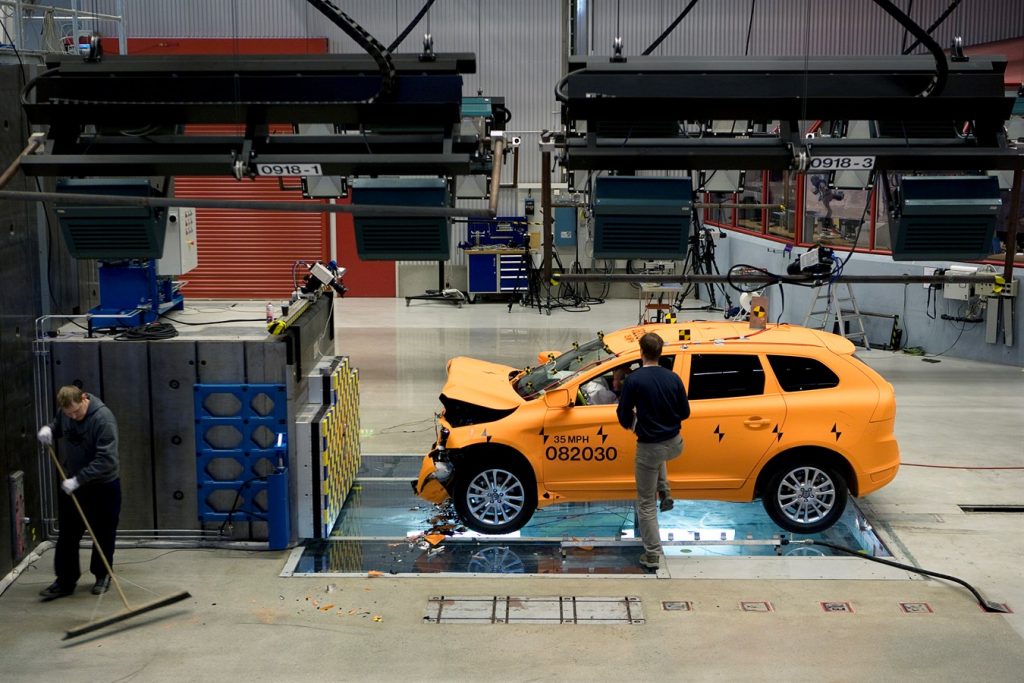
Opened in 2000 by the king of Sweden no less, this crash lab was supposedly the most advanced crash testing centre in the world. More impressively however is that it is still being the pioneer in some areas of crash research some 20 years on.
A multifunctional facility that contains all kinds of crash-testing equipment, it is said that on average one brand new Volvo is crashed within this crash lab. This is of course all done to realise the Swedish automaker’s ambition of ‘a future in which no one is killed or seriously injured’ in one of its new cars.
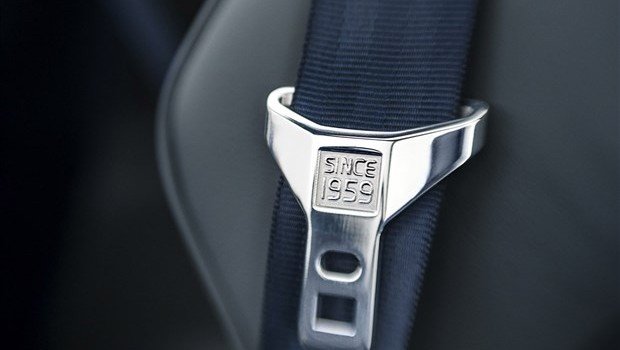
Two test tracks of 108 and 154 metres long respectively are to be found within the main lab itself. The shorter of the two can be moved and positioned at an angle between 0 and 90 degrees to simulate a crash at different angles and speeds, or between two moving cars, with speeds up to 120 km/h.
Within the main lab too is an enormous crash barrier. Used for testing various frontal, rear and side impacts, this 850 tonne barrier can be moved around if needed with the help of air cushions. Additionally, two dozen other fixed and movable barriers that are used in crash testing are also to be found here, including a moose-like structure to simulate crashes involving these animals.

Just outside of the crash lab meanwhile, there is ample room for roll-over crashes and run-off road scenarios to be tested. Furthermore, Volvo offers rescue services the opportunity to hone their life-saving skills here on simulated real life scenarios here too, as well as performing some of their more headline-grabbing safety stunts.

When these crash tests are taking place, a multitude of sensors are attached to the car, the crash test dummies and the barriers. Thereby allowing its safety engineers to register the entire chain of events in detail. Ultra-high definition footage of the crash test is also recorded from every angle imaginable.

Moreover, before every physical crash test, the car model in question has already gone through thousands of computer simulated crash tests. All the data generated by these test is then used by Volvo’s engineers to develop safer cars.
Moving ahead into the electrified future of cars, the Volvo Cars Safety Centre has since been equipped in advance to better manage the safe execution of EV crash tests. Thereby hopefully maintaining the Scandinavian’s stellar automotive safety record into the electric age too.
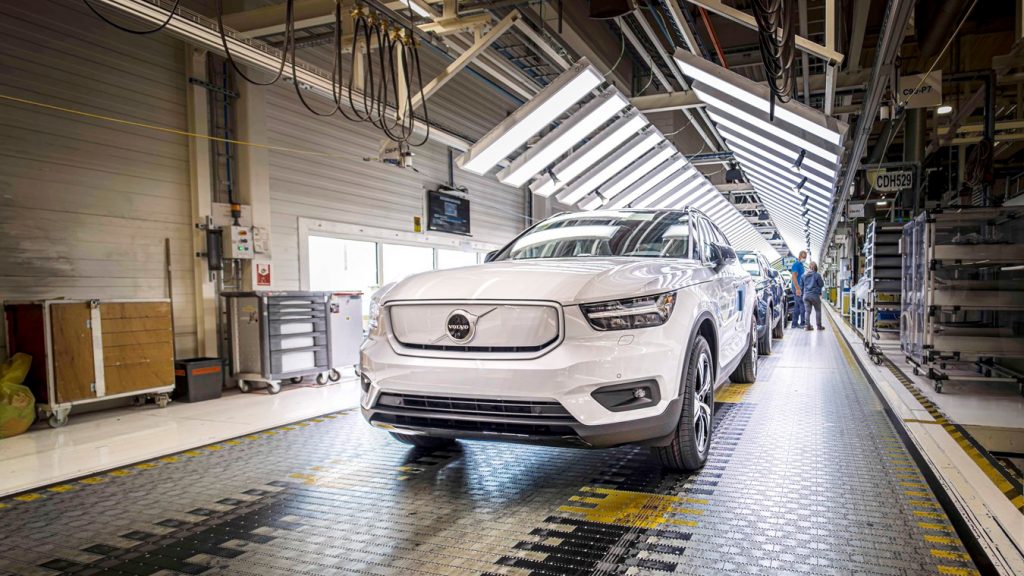
PRESS RELEASE: On average, it crashes at least one brand new Volvo a day. And it has been instrumental in preserving Volvo Cars’ position as a leader in automotive safety to this very day.
This year, the Volvo Cars Safety Centre crash lab celebrates its 20th anniversary. At the time of its opening by the Swedish king, in 2000, it was one of the most advanced crash labs in the world and in many ways it still is today.
To this very day it helps Volvo Cars engineers to push the envelope in safety and to learn from real-life traffic accidents, as the company aims for a future in which no one is killed or seriously injured in a new Volvo.
“Being committed to safety is not about passing a test or getting a safety rating,” said Thomas Broberg, one of Volvo Cars’ leading safety engineers and a two-decade company veteran. “Our commitment to safety is about finding out how and why accidents and injuries occur and then developing the technology to help prevent them. We hope our pioneering work will inspire others to follow, our ambition to reduce road traffic casualties world wide.”
The Volvo Cars Safety Centre crash lab is a multifunctional facility that allows Volvo Cars safety engineers to recreate countless traffic situations and accidents, and perform tests that go beyond regulatory requirements.
The lab contains two test tracks of 108 and 154 metres long respectively. The shorter of the two is moveable and can be positioned at an angle between 0 and 90 degrees, allowing for crash test at different angles and speeds, or to simulate a crash between two moving cars. Cars can be crashed at speeds up to 120 km/h.
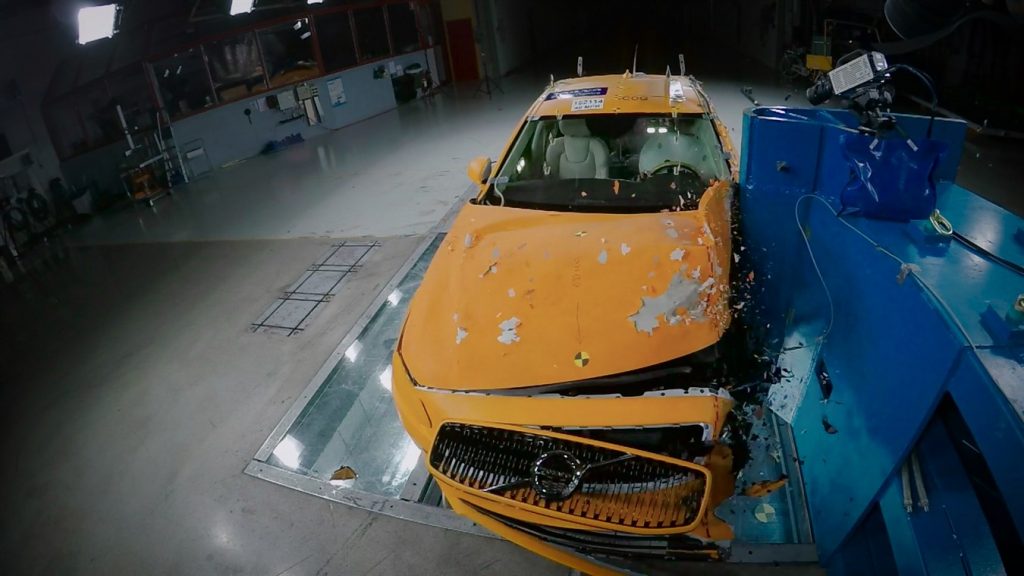
Outside, there is room for performing tests like roll-over crashes and run-off road scenarios, whereby cars are launched into a ditch at high speeds. Here, Volvo Cars also offers rescue services opportunities to hone their life-saving skills, as it did earlier this year when it dropped new Volvos from a height of 30 metres to simulate the heavy damage found in extreme crash scenarios.

Inside the main hall, an enormous crash barrier is used for testing various frontal, rear and side impacts. Weighing an astonishing 850 tonnes, it can be moved around if needed with the help of air cushions.
Additionally, there are around two dozen other fixed and movable barriers that are used in crash testing, including a moose-like structure to simulate crashes involving these animals.
During crashes, the car, the crash test dummies and the barriers are fitted with sensors that allow Volvo Cars engineers to register the entire chain of events in detail. Dozens of ultra-high definition cameras also film the crash test from every angle imaginable.
Before a physical crash test, the car model in question has already gone through thousands of computer simulated crash tests. All the data generated by these test is then used by Volvo’s engineers to develop safer cars.

As the company moves towards an all-electric future, the Safety Centre has in recent years been equipped and prepared specifically to safely execute electric car crash tests as well.
“No matter what the scenario, we can recreate it here at the Volvo Cars Safety Centre and analyse it in detail,” said Thomas Broberg. “For me it is very inspiring to realise that for every hour of testing and analysis we put in, we get closer and closer to our ambition that no one should be killed or seriously injured in a new Volvo.”





